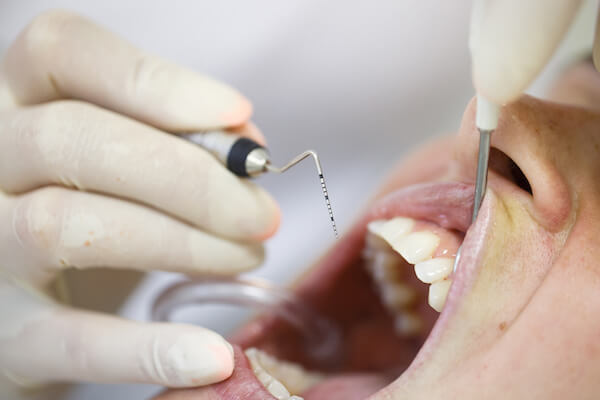
What Are Periodontal Pockets?
If you’ve heard anything about periodontal disease, or gum disease, you’ve probably heard the term “periodontal pockets” and their negative affect on your periodontal health. But you may be asking yourself, what exactly are periodontal pockets? How can they be eliminated? And how can I prevent them from occurring in the first place?
In a healthy mouth, your gums should fit in around each tooth quite tightly with a distance of no more than three millimeters between the gums and the teeth. If there’s any more than three millimeters between the gums and the teeth, the gums are considered unhealthy. For those with unhealthy gums, there’s the potential the space could develop around the teeth which are called periodontal pockets. If untreated, these pockets have the potential to lead to tooth loss.
How Periodontal Pockets Form
The bacteria that lives in your mouth forms a sticky film of plaque that attaches to your teeth and gums. If this film of plaque is not removed, over time it will harden and become tartar which can’t be brushed off, but must be removed with the help of a cleaning by a dentist or dental hygienist through professional cleaning. If the toxins from the bacteria continue to form on the tartar, it causes inflammation of the gum tissues which, in turn, creates a condition called gingivitis. This gingivitis can cause irritation, redness, and swelling of your gums.
When the inflammation or swelling occurs due to the plaque and tartar, pockets can form between the teeth and the gums. If the gums continue to pull away from the teeth, the inflamed tissue becomes an ideal spot for additional plaque and tartar to accumulate. Over time these pockets deepen and become a potential risk to the bone around the teeth.
How to Eliminate Periodontal Pockets
The first way to eliminate these periodontal pockets is through a professional cleaning, a process sometimes called scaling or root planing. The cleaning process will see the removal of the tartar and plaque that has accumulated on the teeth and underneath the gums. With the tartar and plaque removed, the gums will be allowed to heal and retighten around the teeth. If there is no significant bone loss, this could be the only necessary treatment to regaining oral health.
If these deep pockets still remain after the cleaning, the periodontist could recommend surgical treatment in order to stabilize the condition. One of the procedures that may be performed involves folding back the gum tissue and removing the bacteria that wasn’t able to be cleaned previously, then securing the tissue back in place. If there are irregular surfaces or bones, they may need to be smoothed to limit the amount of space where the bacteria may be hiding. This will allow the gum tissue to reattach to the healthy bone.
Preventing Periodontal Pockets at Home
The cleaning or surgical treatment of periodontal pockets is an invasive process that is necessary but that you don’t want to go through. To avoid such a treatment, there are things you can do at home to prevent these periodontal pockets from forming. One way is to use a soft-bristled toothbrush twice a day. Make sure you carefully brush around the gum line as this is where most of the plaque tends to accumulate. You should also replace your tooth brush every three to four months or whenever you notice wear on the bristles. Studies have shown that after about three months, toothbrushes are much less effective at removing plaque and cleaning your gums. If you tend to build up tartar quickly in your mouth, you should consider using special tartar-control toothpaste. You should also be sure to floss every day to avoid these pockets from forming.
If you suffer from deep periodontal pockets, they can be treated through either a professional cleaning or surgery. But the best way to treat periodontal pockets is to prevent them from ever occurring. You can do this by brushing twice a day with a soft-bristled toothbrush and flossing. Practicing good oral hygiene will not only avoid these pockets but also help you avoid other potential health problems that are caused by periodontal disease. If you’re looking for a solution to your periodontal problems, call on Vero Implants and Periodontics.